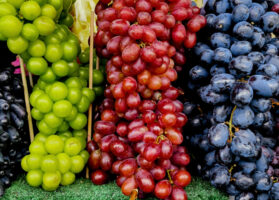Agronometrics in Charts: Santa Maria Strawberries Ready For Harvests
In this installment of the ‘Agronometrics In Charts’ series, Sarah Ilyas studies the state of the California strawberry season. Each week the series looks at a different horticultural commodity, focusing on a specific origin or topic visualizing the market factors that are driving change.
Strawberry picking recently kicked off in Santa Maria, California for strawberries that were planted in late May. Demand right now for strawberries is fair given the quality of berries available. Over the last two decades, the U.S. strawberry industry has experienced an upward trend in per person consumption and overall demand. This is due to multiple reasons: consumers have become more aware of the importance of eating a healthy diet; yield improvements have increased domestic supply and imports have allowed for year-round availability.
California and Florida are the top two strawberry producing states within the U.S, with California producing over 91 percent of the entire strawberry crop. Broadly, the strawberry season in Southern and Central California occurs from January to September, while Central California harvest dates vary from April to June. The Mediterranean climate of California has both hot, dry summers and mild, wet winters suited for Strawberry Season California. Pricing is approximately $14 for 1 lb. packs right now, a number that also looks similar to last year at this time.

Source: USDA Market News via Agronometrics.
(Agronometrics users can view this chart with live updates here)
The average daily prices of Strawberries in the US have fallen by 13.21% marking a $2.33 decrease on the previously recorded price, from $17.67 to $15.33.

Source: USDA Market News via Agronometrics.
(Agronometrics users can view this chart with live updates here)
According to research conducted by the Washington State University, farmers have been aiming to extend the growing season of strawberries while keeping costs minimal. This can be achieved by virtue of high tunnel production. High tunnels are large hoop houses covered in plastic that cost a fraction of greenhouse production. Berries receive a premium price early and late in the season, therefore an extended season allows farmers to acquire a bigger market share.
All pricing for domestic US produce represents the spot market at Shipping Point (i.e. packing house/climate controlled warehouse, etc.). For imported fruit, the pricing data represents the spot market at Port of Entry.
Written by: Sarah Ilyas






